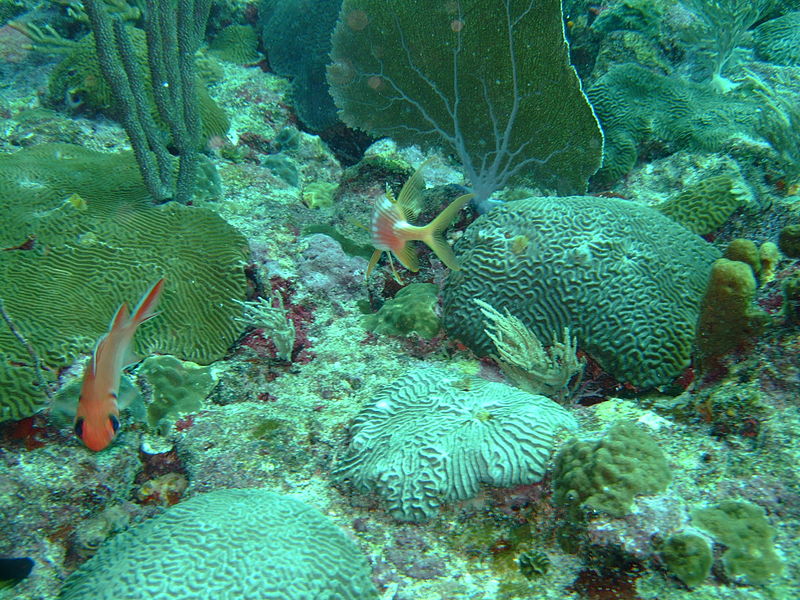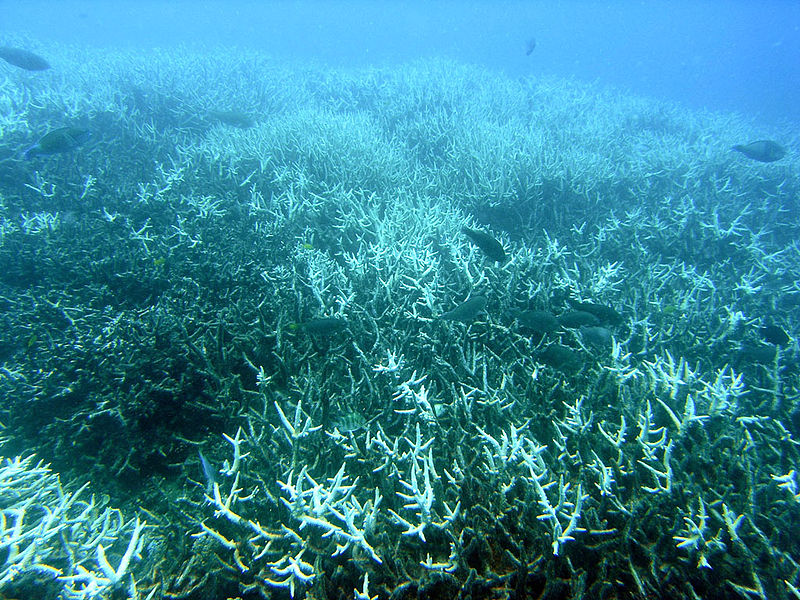Interactions
Hermodice carunculata, or fireworm, interacts with many different
organisms through many different forms of symbiosis including
predation, commensalism, and defense. The fireworm plays a very
important role in the tropical ocean ecosystem across the globe
(Perez & Gomes 2012; Moreira et al. 2013).
First, the fireworm is a predator of many different organisms found
in the ocean. H. carunculata feeds on many types of algae and
sedentary animals such as anemones, gorgonids, scleractinians, and
other various types of coral (Perez & Gomes 2012). The fireworm is a
corallivore, which prefers to feed off of juvenile and larvae coral
(Moreira et al. 2013). The fireworm, a polychaete worm, is known to
feed off of a zoanthid species, which belongs to the genus Palythoa;
this polychaete then becomes highly concentrated within its organs with palytoxin from the zoanthid. Marine animals such as the
fireworm have a higher tolerance for the palytoxin, which to
terrestrial vertebrates is lethal, because most animals in the
marine food chain have high toxin concentrations, and they have
become immune to it (Gleibs and Mebs 1999). The fireworm consumes
polyps from both soft and hard corals (Arias et al. 2013). The
feeding process by Hermodice carunculata begins with connecting its
everted buccal mass to the prey; this process is very dangerous for
the prey because it causes permanent damage to the prey (Perez &
Gomes 2012). There is a fine line between grazing on the coral to
prevent overgrowth of algae and overconsumption leading to loss of
coral recruits, which usually ends up in overeating of the coral by
the fireworm (Perez & Gomes 2012; Wolf & Nugues 2012). In fact, a
fireworm can consume the branches of a coral for up to 30 minutes
(Perez & Gomes 2012), and the most commonly consumed coral by
Hermodice carunculata is scleractinian coral (Wolf & Nugues 2012).
with palytoxin from the zoanthid. Marine animals such as the
fireworm have a higher tolerance for the palytoxin, which to
terrestrial vertebrates is lethal, because most animals in the
marine food chain have high toxin concentrations, and they have
become immune to it (Gleibs and Mebs 1999). The fireworm consumes
polyps from both soft and hard corals (Arias et al. 2013). The
feeding process by Hermodice carunculata begins with connecting its
everted buccal mass to the prey; this process is very dangerous for
the prey because it causes permanent damage to the prey (Perez &
Gomes 2012). There is a fine line between grazing on the coral to
prevent overgrowth of algae and overconsumption leading to loss of
coral recruits, which usually ends up in overeating of the coral by
the fireworm (Perez & Gomes 2012; Wolf & Nugues 2012). In fact, a
fireworm can consume the branches of a coral for up to 30 minutes
(Perez & Gomes 2012), and the most commonly consumed coral by
Hermodice carunculata is scleractinian coral (Wolf & Nugues 2012).
 Second, H. carunculata plays an important role in its environment
through commensalism. The fireworm serves as a winter reservoir for
many different types of heterotrophic bacteria, as well as a summer
vector (Sussman et al. 2003). One example of a coral-bleaching
pathogen that uses Hermodice carunculata as a host is Vibrio shiloi,
which is found in the Mediterranean Sea; V. shiloi uses the fireworm because it cannot survive in water less 20°C (Sussman et al. 2003).
Studies have shown that areas with fireworms had high concentrations
of coral bleaching, but in areas without fireworms, there was no
bleaching occurring. However, these bacteria play an important role
in the ecosystem because they fixate nitrogen, produce
antimicrobials, and they are a food source (Moreira et al. 2013).
The fireworm is a host for the various types of bacteria without
being effected, so they exhibit a communalistic relationship.
Second, H. carunculata plays an important role in its environment
through commensalism. The fireworm serves as a winter reservoir for
many different types of heterotrophic bacteria, as well as a summer
vector (Sussman et al. 2003). One example of a coral-bleaching
pathogen that uses Hermodice carunculata as a host is Vibrio shiloi,
which is found in the Mediterranean Sea; V. shiloi uses the fireworm because it cannot survive in water less 20°C (Sussman et al. 2003).
Studies have shown that areas with fireworms had high concentrations
of coral bleaching, but in areas without fireworms, there was no
bleaching occurring. However, these bacteria play an important role
in the ecosystem because they fixate nitrogen, produce
antimicrobials, and they are a food source (Moreira et al. 2013).
The fireworm is a host for the various types of bacteria without
being effected, so they exhibit a communalistic relationship.
Third, the fireworm also has a unique type of defense against its
own predators. The fireworm has harpoon-like chaetae, which causes
skin irritation and a stinging feeling to anything handling it; the
cause of this irritation is complanine, a trimethylamine compound
(Arias et al. 2013). The fireworm’s defense mechanism can prove
dangerous for those who swim near coral reefs because they are
risking getting stung.
